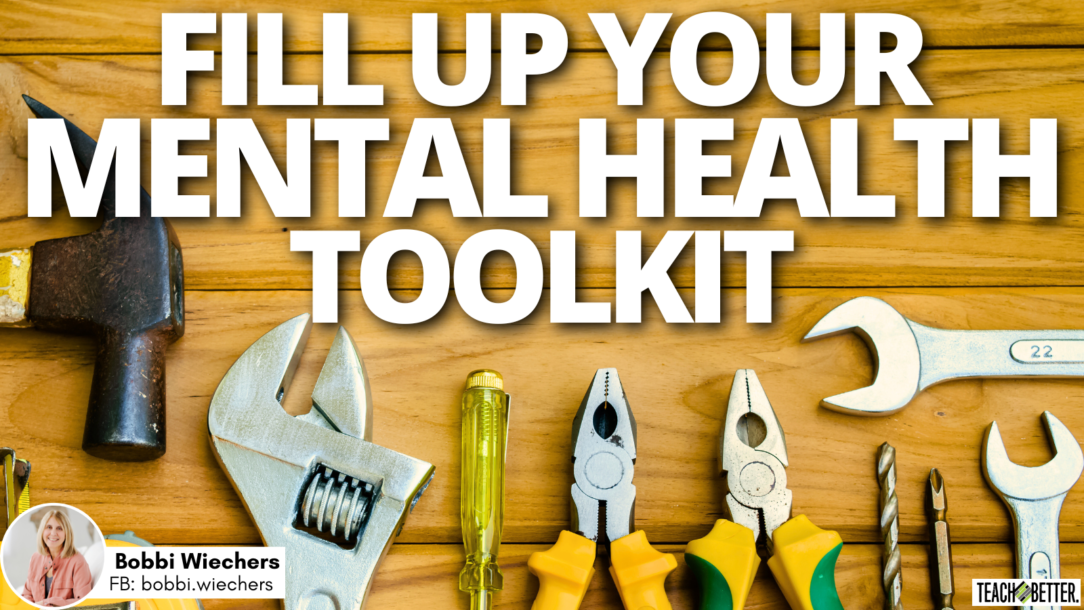TL;DR:
- Teaching requires balancing curriculum with social and emotional support for students.
- Strategies for maintaining mental health include organization, routines, and self-reflection.
- Connection, positivity, and making daily joyful choices contribute to a healthy teaching environment.
Teaching is a rewarding, yet challenging profession. Not only are you responsible for teaching the curriculum to a classroom full of students, but for facilitating positive social and emotional learning as well. Each student walks into your class with their own experiences and expectations for the new year, as do you.
Emotions are contagious, so spread love, kindness, and the belief that everyone can be successful and your students will believe it too. - Bobbi W. Share on X
Taking the time to develop yourself impacts your students and colleagues. Photo by Bookblock on Unsplash
Create a mental health toolkit for yourself so you have strategies to stay balanced when challenges arise.
#1. Organize yourself at home and school.
Get rid of clutter and only keep items that you will need. Put away items that you know you will use later. An organized space helps to regulate not only your brain but your students as well.
#2. Establish an evening and morning routine.
- Morning routine – get up when your alarm goes off. Start your day off positively by jotting down a few things you are grateful for, taking a walk, reading, or listening to text that focuses on personal growth and development.
- Evening routine – get organized for the next day! This includes lunch prep, packing your school bag, and laying out your clothes.
#3. Ask yourself every day: What are my priorities for the day?
Write them down. Then check in with yourself throughout the day to ensure you are “on track” with that day’s priorities since it is easy to get sidetracked.
#4. Learn to give yourself time to respond instead of react.
Count to 5 in your head before responding, or say, “Let me think about that.” Also, give students “think time” before jumping in.
#5. Make decisions that lead you toward your goals.
#6. Keep a notebook to write questions that arise during the day.
You are not expected to know everything. Then find someone at the end of the day to ask or look it up.
#7. Have a calming message you can repeat to yourself.
Examples include “Everything is working out,” “This feeling is only temporary,” or “I am okay.” Put it on a post-it note where you can see it.
[scroll down to keep reading]#8. Connect with others every day.
Small moments count such as a smile or a kind gesture.
#9. Reframe how you see your students who struggle.
For example, instead of thinking they are “attention seeking,” say they are “seeking connection.” Then look for ways to connect with them.
#10. Focus on the positive and you will begin to see more positive moments in your environment.
#11. Do something every day that brings you joy.
#12. Make the choice to be happy every day.
Remember….emotions are contagious, so spread love, kindness, and the belief that everyone can be successful and your students will believe it too.
About Bobbi Wiechers
Bobbi is a retired elementary educator with 30 years of experience. She has held a variety of roles during her career from classroom teacher to special education consultant. She has taught in small remote communities and urban areas. The majority of her career has been in special education supporting students and mentoring educators.
Bobbi believes that reading is a life skill that all students should be given the opportunity to attain. She is passionate about mental health and recently has completed research investigating the components in a classroom that can positively impact student wellness. Bobbi firmly believes that teachers are the most important component of education. She knows how teacher mental health impacts student mental health and advocates for increased support and awareness. She has developed an online program and in person workshops meant to support educators on their own growth journey.
Bobbi is a lifelong learner and is always taking courses to be a better mentor and advocate for educators. She has taught in both Canada and the United States. When she is not taking courses, she likes to travel, kayak, garden, paint furniture and read. She is mom to 3 young adults and 4 fur babies. Bobbi lives in Waterloo, Ontario with her husband.



